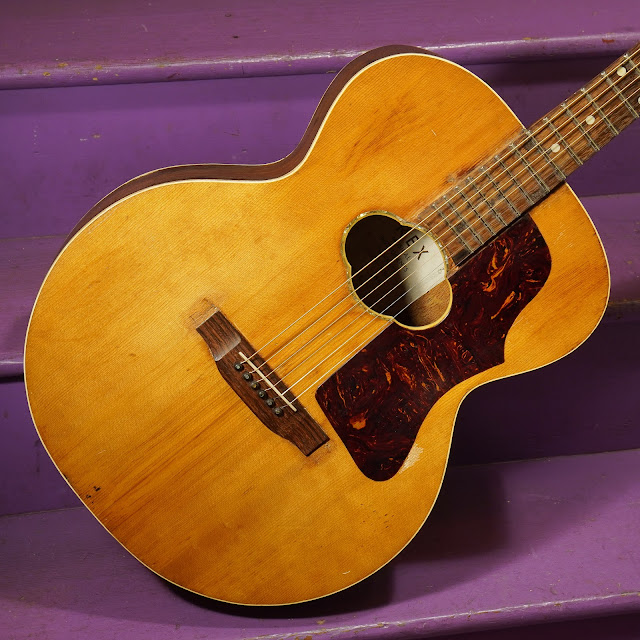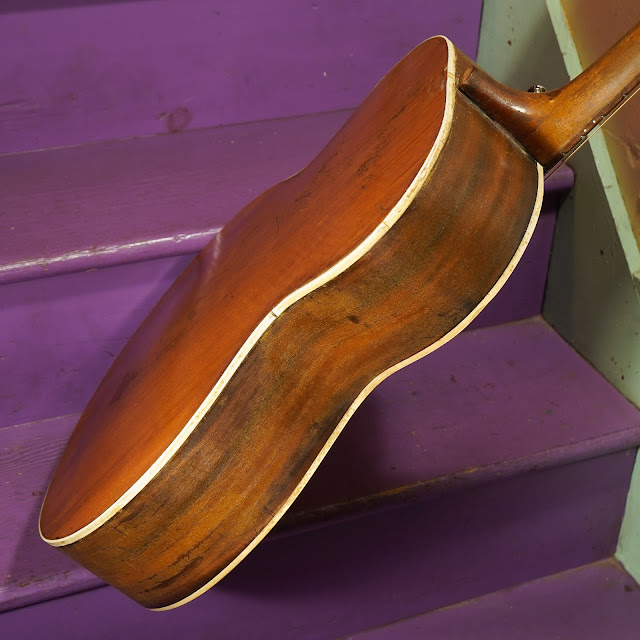1930s Rex (Possibly Epiphone) Model 180 Jumbo Guitar
This strange guitar was built in the late '30s or early '40s judging by its style and features. I'm almost certain that Epiphone made it for the Rex brand as it has a period Epi-style truss rod fit at the headstock. These are pretty distinctive. The body shape is also very similar to some Epi archtop models so perhaps they used the same mold to build it. The last bit is that the neck shape (and extreme fretboard radius) is very similar to period Epi archtop builds and it also has ply back and sides that remind me a lot of the walnut ply used on Epis. I can't prove it, though, and a likely "alternative builder" might be Gretsch, but the heft of the thing (Gretsch plywood is heavy) isn't right for that.
That all said, let's talk about its odd features! It has a super-long, 27 3/8" scale length. That's baritone range, folks. I wonder if a plectrum banjo player was involved in this build, though, as that's also a scale length familiar to plectrum players. It also has a big, 16 1/4" lower bout. It also has that soundhole!
It's solid spruce over ply (walnut?) back and sides, has a fan-braced(!) top, and mystery-wood neck with rosewood board and headstock veneer. The bridge is an obvious replacement and the whole thing is refinished. Its pickguard is a replacement but, it seems, is roughly-similar in some ways to what the original one was like. There's no pearl inlay around the rosette in the location where the pickguard covers it. Neat, huh?
Its fretboard radius is just under 7 1/4" and that's way curvy for the time. I've of course refretted it and planed the board at the same time. I also added side dots and fit new, Gotoh, Kluson-style tuners. It came with some Harmony-style tuners from the late '30s (fancy ones) but I wasn't sure if they were original or not and, besides, they were damaged and fussy.
How's it sound? Glorious, in its own weird way. I took a first strum on this and was admittedly a little disappointed. After moving into the bigger room of the shop proper, I laid into it a bit more and was then surprised by how much power, warmth, and sustain it has. It's actually very impressive in how responsive it is and the extra-long scale gives plenty of detuning options. In the video I have it down a whole step to DGCFAD strung with 52w-12 gauges. I imagine with heavier strings one could get to C# or C overall nice and easy and with baritone strings it might be a beast or it might implode. Time will tell!
























Comments